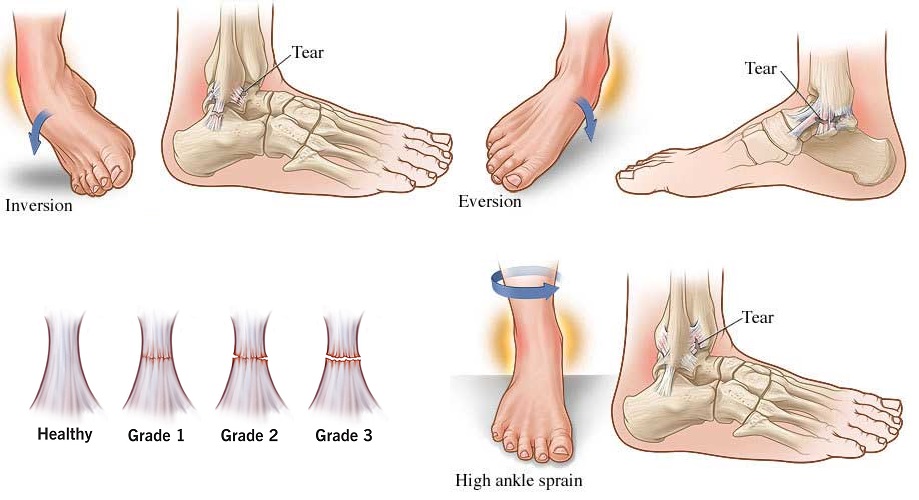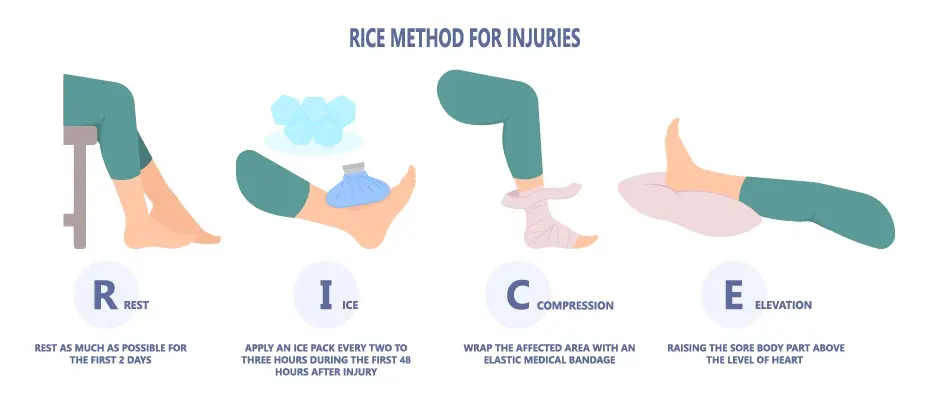What’s an Ankle Sprain?
An ankle sprain happens when the ligaments that help the ankle stretch past their limits or tear. Ligaments are robust bands of tissue that stabilize joints. Sprains generally occur when the foot twists or rolls unexpectedly, inflicting the ankle joint to maneuver out of its regular place .
What Causes an Ankle Sprain?
Ankle sprains sometimes consequence from:
- Twisting or rolling the ankle: Typically throughout sports activities or strolling on uneven surfaces.
- Falls: Touchdown awkwardly can pressure the ankle into an unnatural place.
- Sudden influence: Direct blows to the ankle can stretch or tear ligaments.
These incidents can overstretch or tear the ligaments, resulting in a sprain .
What are the Signs of an Ankle Sprain?
Widespread signs embrace:
- Ache: Particularly when bearing weight on the affected foot.
- Swelling: On account of irritation.
- Bruising: Discoloration across the ankle.
- Restricted vary of movement: Problem transferring the ankle.
- Instability: Feeling of the ankle giving manner .
How is an Ankle Sprain Recognized?
Prognosis entails:
- Bodily examination: Assessing swelling, tenderness, and vary of movement.
- Imaging exams: X-rays to rule out fractures; MRI or ultrasound for detailed ligament evaluation .
Grading Severity of Ankle Sprains

Ankle sprains are generally labeled into three grades based mostly on the extent of ligament harm. Understanding the severity of the sprain is crucial for figuring out the suitable therapy plan and anticipated restoration time.
Grade I Sprain (Gentle)
- Ligament Situation: Overstretching with out tearing.
- Joint Instability: Little to none.
- Ache and Swelling: Gentle.
- Mobility Affect: Minor issue with strolling.
- Therapy: Conservative care reminiscent of relaxation, ice, compression, and elevation (R.I.C.E.); often no long-term issues.
Grade II Sprain (Reasonable)
- Ligament Situation: Partial tearing of ligament fibers.
- Joint Instability: Gentle to reasonable.
- Ache and Swelling: Reasonable to extreme.
- Mobility Affect: Some issue strolling; delicate bruising is commonly current.
- Therapy: Might require a brace or splint; bodily remedy is commonly beneficial for restoration and to stop reinjury.
Grade III Sprain (Extreme)
- Ligament Situation: Full ligament rupture.
- Joint Instability: Important.
- Ache and Swelling: Extreme.
- Mobility Affect: Marked issue or incapacity to stroll resulting from intense ache.
- Therapy: Requires medical analysis; immobilization, bodily remedy, and in some instances surgical intervention could also be vital.
The grade/severity of a ankle sprain performs a vital function in shaping the therapy strategy. Whereas delicate instances can usually be managed at house, extra extreme sprains demand medical consideration from a doctor and/or rehabilitation help from a licensed bodily therapist.
What’s Good for an Ankle Sprain?

Preliminary care consists of the R.I.C.E. technique:
- Relaxation: Keep away from actions that trigger ache.
- Ice: Apply ice packs for 15-20 minutes each 2-3 hours.
- Compression: Use elastic bandages to scale back swelling.
- Elevation: Hold the ankle raised above coronary heart stage .
Over-the-counter ache relievers like ibuprofen might help handle ache and irritation.
What are the Danger Elements for an Ankle Sprain?
Danger elements embrace:
- Earlier ankle accidents: Will increase susceptibility to future sprains.
- Sports activities participation: Particularly in sports activities requiring leaping or fast directional adjustments.
- Uneven surfaces: Strolling or operating on irregular terrain.
- Insufficient footwear: Carrying sneakers that don’t present correct help .
Incessantly Requested Questions About Ankle Sprain
Q: How lengthy does it take to recuperate from an ankle sprain?
A: Restoration time varies. Gentle sprains might heal in a number of days, whereas extreme sprains can take a number of weeks to months.
Q: When ought to I see a health care provider?
A: In case you expertise extreme ache, can not bear weight, or discover important swelling or deformity, seek the advice of a healthcare supplier.
Q: Can I stop ankle sprains?
A: Sure. Strengthening workout routines, correct footwear, and being cautious on uneven surfaces might help stop sprains.
References
- Sprained Ankle: Signs, Varieties, Therapy & Restoration. Cleveland Clinic. https://my.clevelandclinic.org/well being/ailments/22048-sprained-ankle
- Sprained ankle – Signs and causes. Mayo Clinic. https://www.mayoclinic.org/diseases-conditions/sprained-ankle/symptoms-causes/syc-20353225
- Sprained Ankle – OrthoInfo – AAOS. https://orthoinfo.aaos.org/en/ailments–situations/sprained-ankle/
- Ankle Sprain and Pressure Danger Elements – Sports activities-health. https://www.sports-health.com/sports-injuries/ankle-and-foot-injuries/ankle-sprain-and-strain-risk-factors


